6th September 2013 – Bagan Dotting the 42 sq.km. plain east of the Irrawaddy River, Bagan’s 3000-some temples make up the most wondrous sight in Myanmar 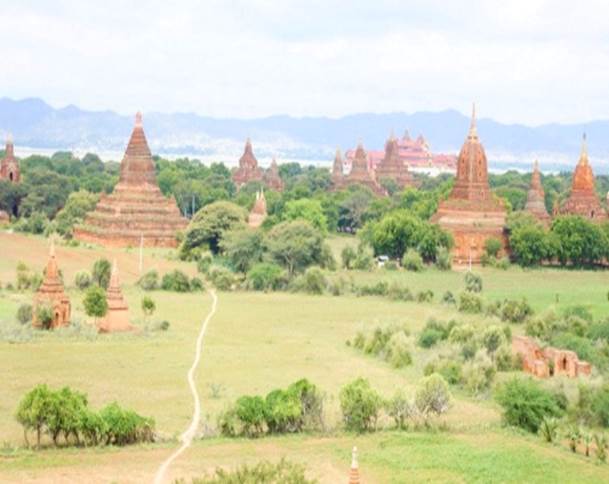
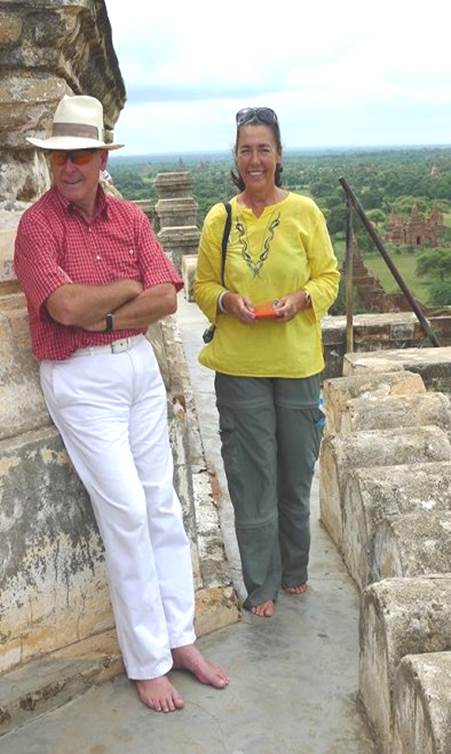
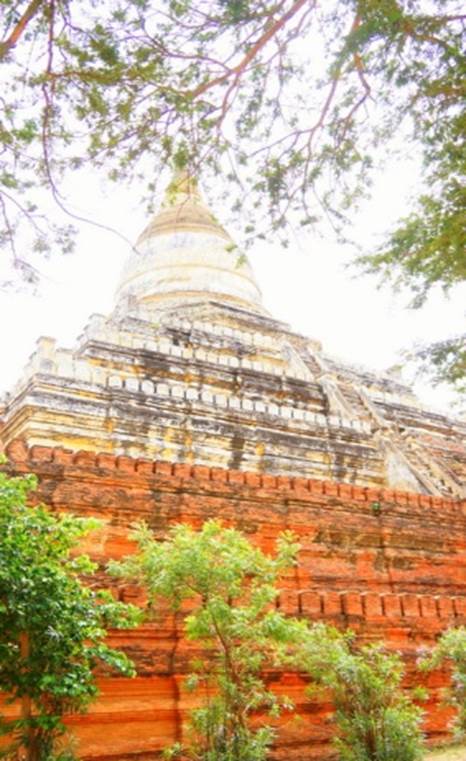
A good bit of exercise climbing up to the top of these steep steps of one of the temples to get the view 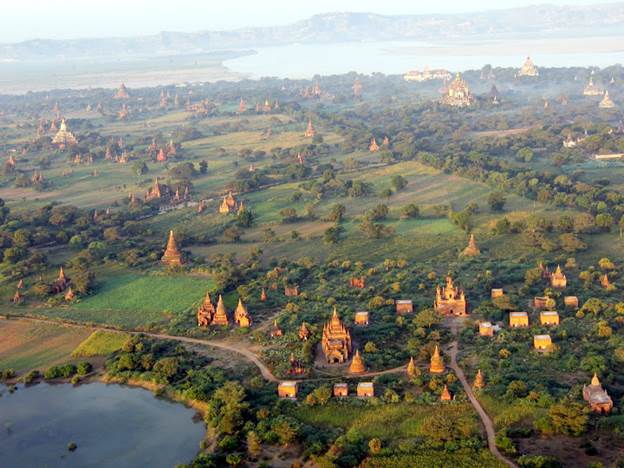
These two photos are taken from the hot air balloon, which my friend took earlier in the year. None are in service during the rainy season whilst we are there! 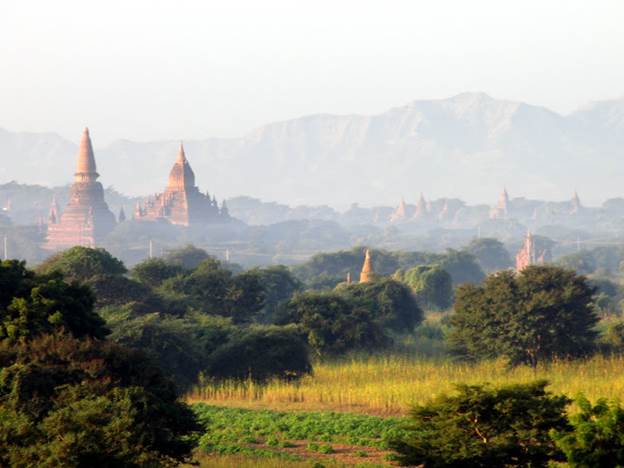
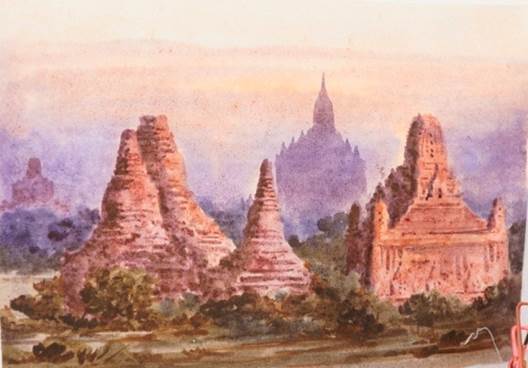
The burst of energy in this area ran from 1047 to 1287, as Kublai Khan raiders approached and destroyed vast swathes of Burma. 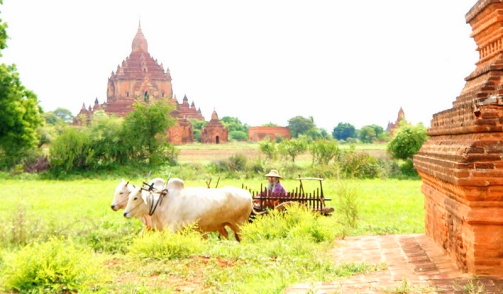
Many of the ruined ‘stupas’ are being renovated by people who wish to use them for the ashes of their loved ones. The fields around still needed tending however, hence the cart and bullocks passing by. 
Ananda Pahto features a 51m high comcob (sikhara) top 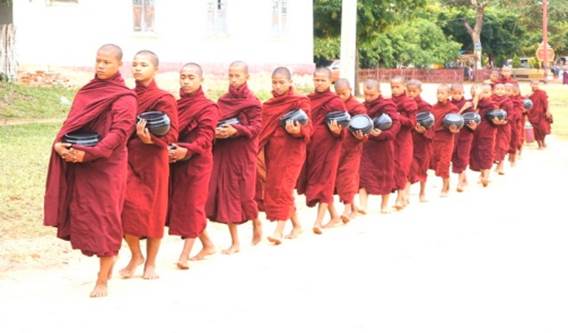
Novice monks coming out of their monastery to take alms at 7 a.m. 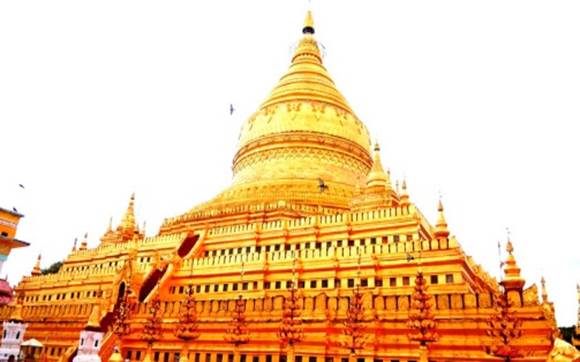
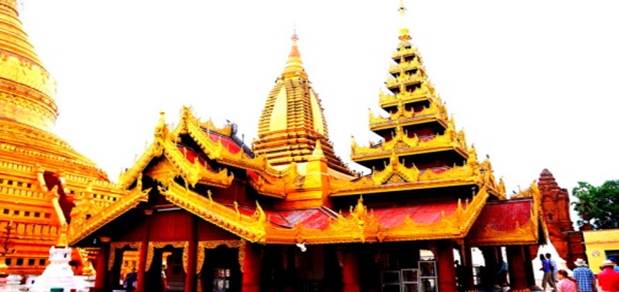
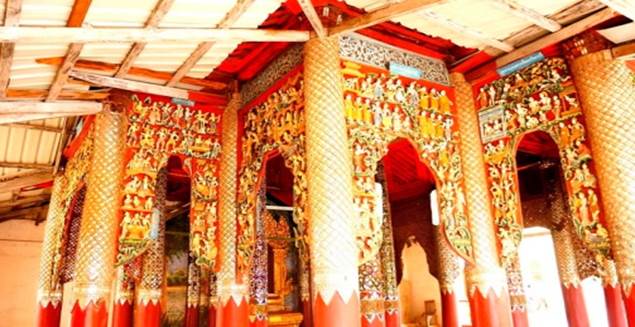
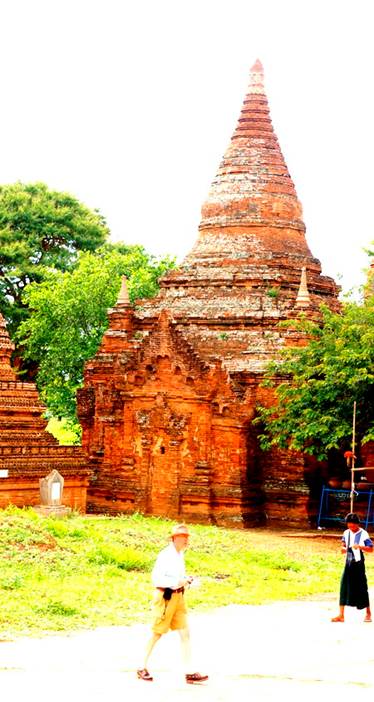
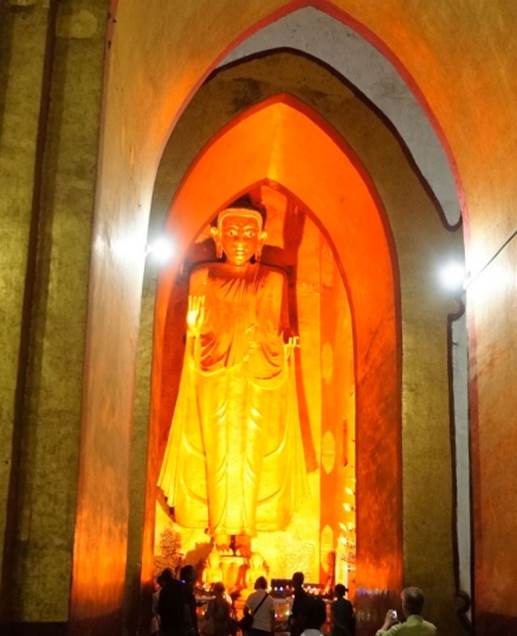
North, South, East and West aisles of this temple have large golden Buddha’s, each with different hand gestures. This one is Vitarka Mudra interpreted as the hand gesture that evokes the energy of teaching and intellectual discussion, or argument. It mostly feels like the transmission of a particular teaching with no words, and the circle formed by the thumb and index finger creates a constant flow of energy/information 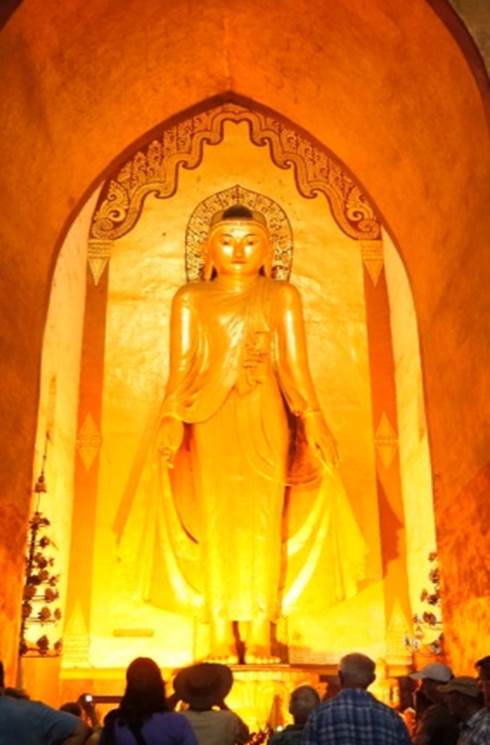
With the palm facing forward and down, it means the gift of bestowing compassion (varada Mudra) 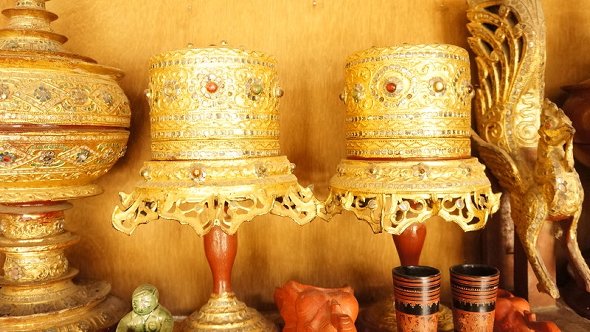
These are gold leafed incense shakers The bowl on the left is for offerings Next day, 7th September, we take a bus trip out to Mount Popa 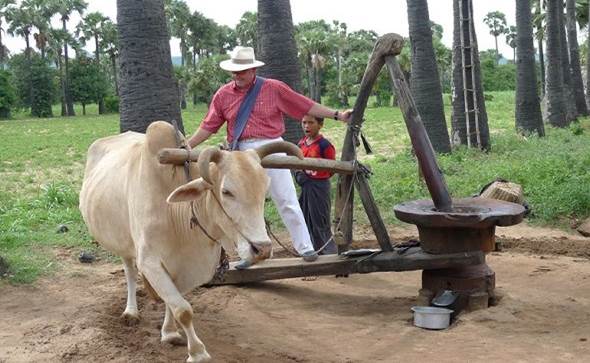
And stop on the way to watch sugar being made from the sugar flower in the palm trees. The oxen is grinding the sap taken from the sugar flower 
This man has his hatchet in his waist band to cut off the flower 
Here he is at the top of three, with the bowls to collect the sap from the flower stems 
Here the sap is reduced and rolled up into small ‘fudge’ balls 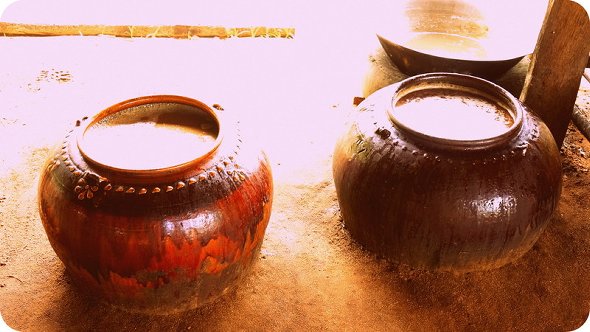
These jars are for fermenting the sugary sap 
The fermented juice is then distilled and run off into bottles 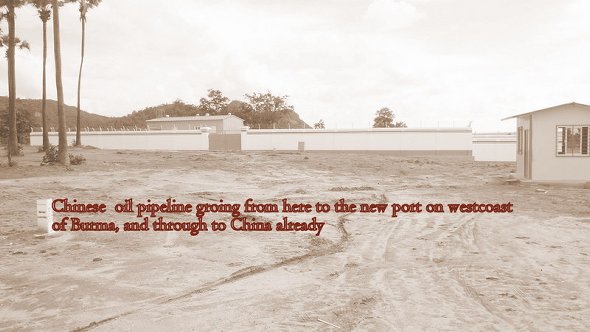
We pass right night to this emplacement, where the Chinese have a pipeline leading from the West coast of Burma through to China for their oil. 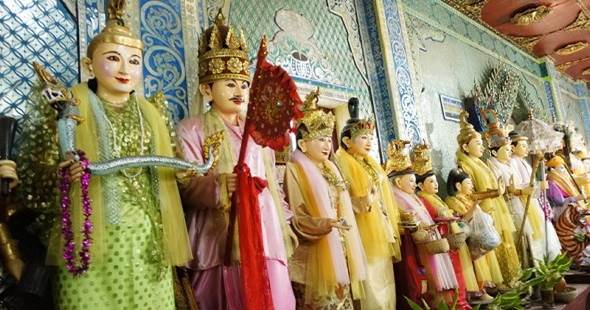
These mannequin like figures represent the 37 nat which protect Mount Popa. The Mahagiri shrine where they are kept, is a major pilgrimage destination. Burmese superstition says you shouldn’t wear red or black on the mountain, nor should you curse, say bad things about other people or bring along any meat (especially pork) – any of these actions could offend the residing nat who might then retaliate with a spate of ill fortune. And none one likes a mad nat. 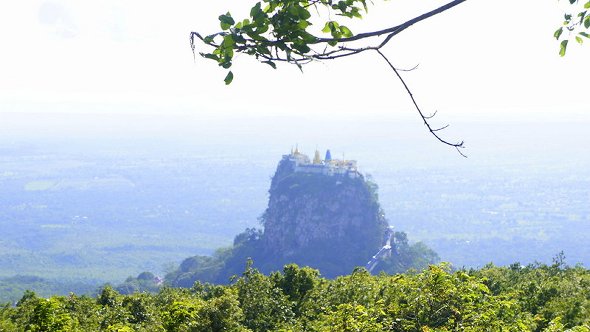
The solitary peak rising to 737m from the flat surrounding Myingyan Plain, topped with a superb pagoda, Popa Daung Kalat in Burmese | 
























